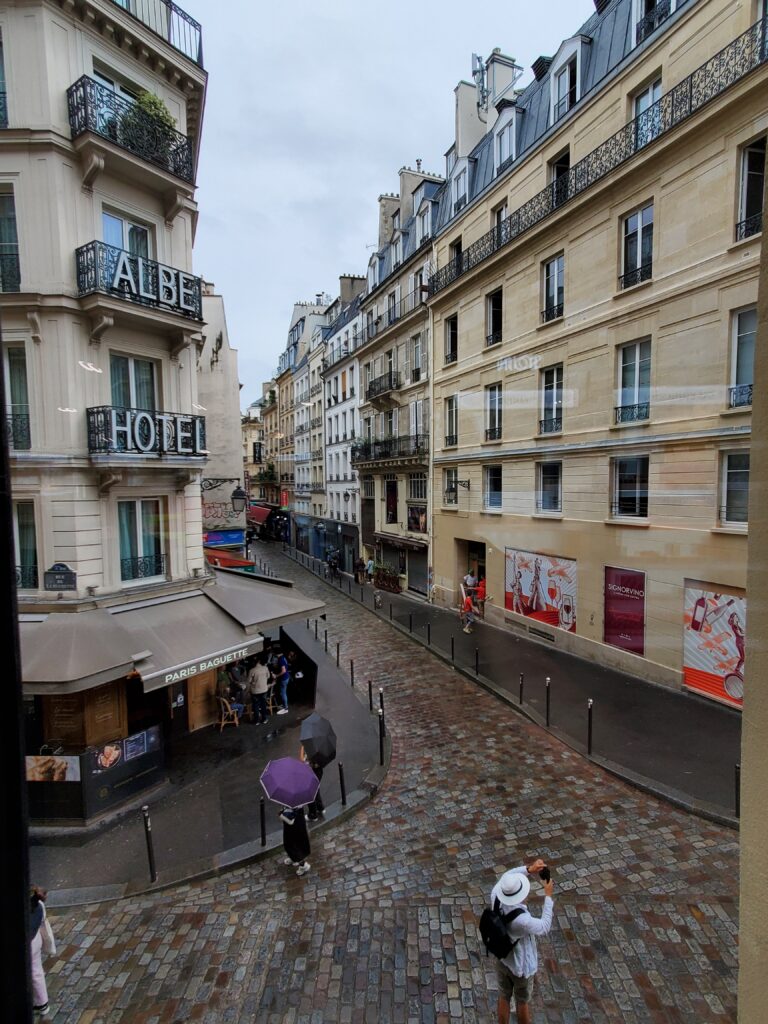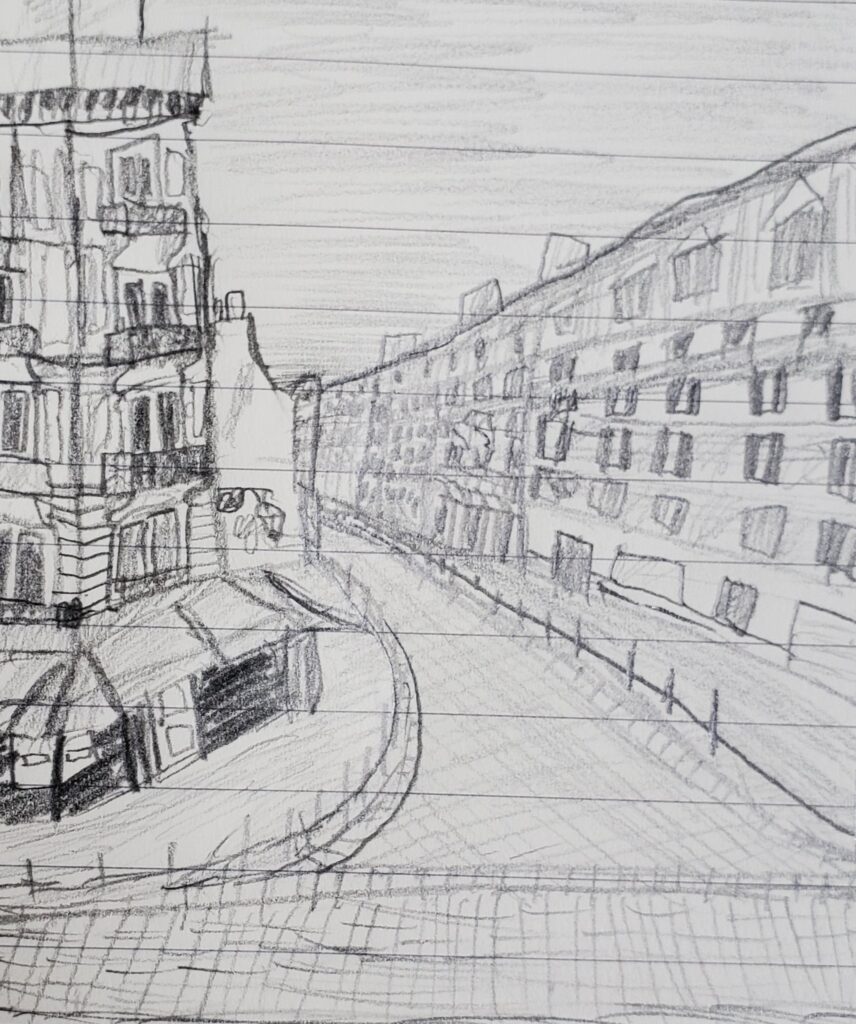Hello! This particular entry will not only act as an introduction to what this blog will discuss, but it will also be an introduction to the city that it is about: Paris. My main focus will be the history of Paris through particular sites and structures being visualized through a focal piece of architecture. The entries will be accompanied by an image of said focal architecture as well as a quick sketch of the site. For example, if I were to delve into the religious history of the city, I could use an image of one of the many churches around Paris like Sacre-Cœur, Saint Chappell, and Notre-Dame along with a sketch (or sketches) highlighting the structure or an aspect of it. Today’s entry will contain a brief overview of the area’s habitation accompanied by an image of the Latin District.
Paris, or the region around what will become Paris, has been inhabited for millennia. The flat land located around the Seine was perfect for settlement, especially since this stretch of the Seine is slow moving and, like the land around it, very flat making for easy navigation across and both up and down stream. This particular part of the Seine also has two easily defensible islands in the middle of the river which are now called Île de la Cité and Île de Saint Louis. Île de la Cité was a prime location for the iron age Parisi tribe, the pre-roman inhabitants of the region, to take shelter in the event of invasion. Even after the Romans took over the land from the Parisi through conquest, the island was strategically important and used as a citadel for the castrum they would build on the left bank just south of the island.
Over time, after the Western Roman Empire fell, a germanic group called the Franks took residence around this strategic stretch of the Seine, building a castle on Île de la Cité. The site of this castle would be the same site as multiple later structures for the monarchs of Frankia, and later France, to rule their kingdom from until the construction of the Louvre. Near the site of the former Roman castrum is the Sorbonne, the oldest university in France, which educated scholars, doctors, and theologians around Europe in various fields of study from sciences to Latin. This university is what gives this part of the left bank, the Latin District, its name.
The accompanying image and sketch is from/of and intersection in the Latin District of Paris.



Nice! Please keep sketching and posting what appeals to you.